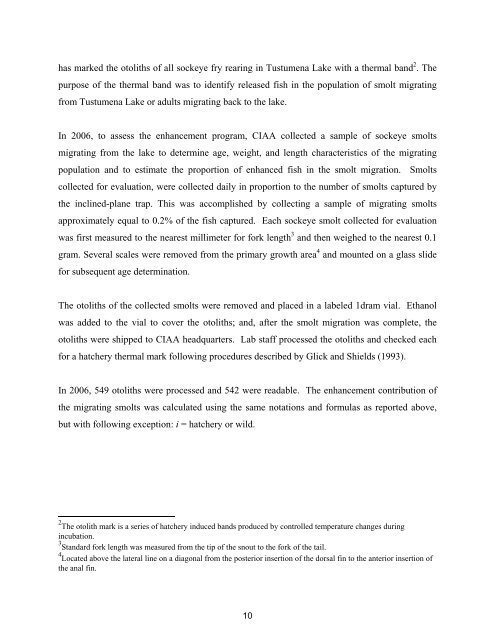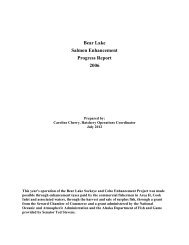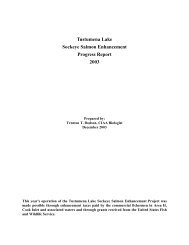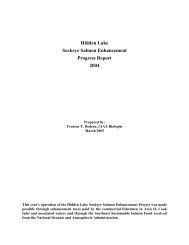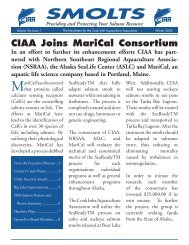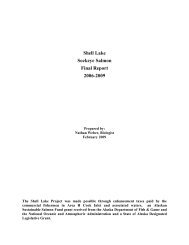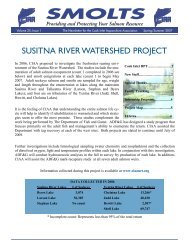Tustemena Lake 2006 - Cook Inlet Aquaculture Association, Kenai ...
Tustemena Lake 2006 - Cook Inlet Aquaculture Association, Kenai ...
Tustemena Lake 2006 - Cook Inlet Aquaculture Association, Kenai ...
You also want an ePaper? Increase the reach of your titles
YUMPU automatically turns print PDFs into web optimized ePapers that Google loves.
has marked the otoliths of all sockeye fry rearing in Tustumena <strong>Lake</strong> with a thermal band 2 . The<br />
purpose of the thermal band was to identify released fish in the population of smolt migrating<br />
from Tustumena <strong>Lake</strong> or adults migrating back to the lake.<br />
In <strong>2006</strong>, to assess the enhancement program, CIAA collected a sample of sockeye smolts<br />
migrating from the lake to determine age, weight, and length characteristics of the migrating<br />
population and to estimate the proportion of enhanced fish in the smolt migration. Smolts<br />
collected for evaluation, were collected daily in proportion to the number of smolts captured by<br />
the inclined-plane trap. This was accomplished by collecting a sample of migrating smolts<br />
approximately equal to 0.2% of the fish captured. Each sockeye smolt collected for evaluation<br />
was first measured to the nearest millimeter for fork length 3 and then weighed to the nearest 0.1<br />
gram. Several scales were removed from the primary growth area 4 and mounted on a glass slide<br />
for subsequent age determination.<br />
The otoliths of the collected smolts were removed and placed in a labeled 1dram vial. Ethanol<br />
was added to the vial to cover the otoliths; and, after the smolt migration was complete, the<br />
otoliths were shipped to CIAA headquarters. Lab staff processed the otoliths and checked each<br />
for a hatchery thermal mark following procedures described by Glick and Shields (1993).<br />
In <strong>2006</strong>, 549 otoliths were processed and 542 were readable. The enhancement contribution of<br />
the migrating smolts was calculated using the same notations and formulas as reported above,<br />
but with following exception: i = hatchery or wild.<br />
2 The otolith mark is a series of hatchery induced bands produced by controlled temperature changes during<br />
incubation.<br />
3 Standard fork length was measured from the tip of the snout to the fork of the tail.<br />
4 Located above the lateral line on a diagonal from the posterior insertion of the dorsal fin to the anterior insertion of<br />
the anal fin.<br />
10


